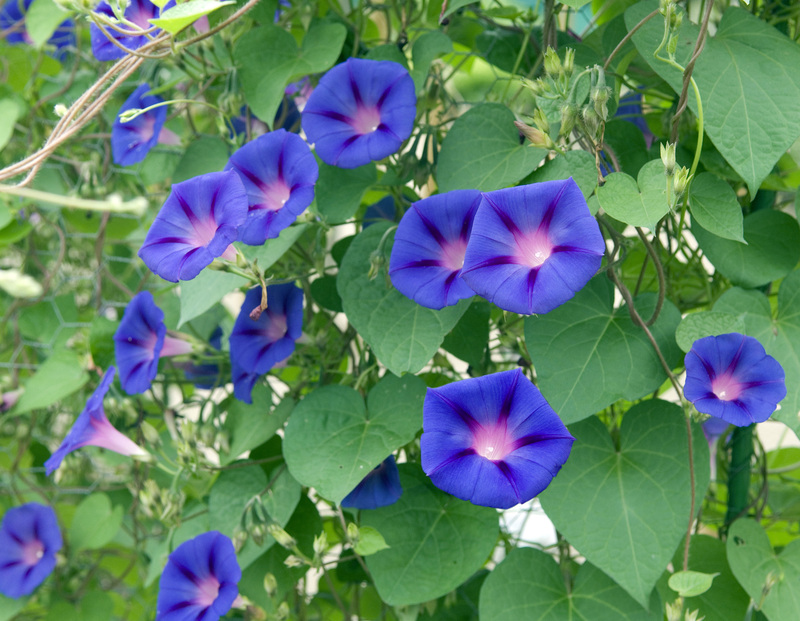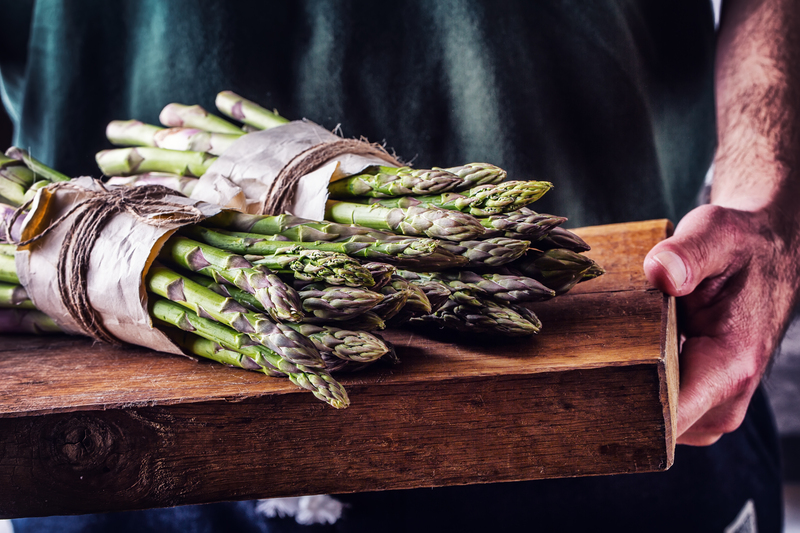Winter Plant Defense: How to Keep Your Garden Protected
Posted on 23/09/2025
Winter Plant Defense: How to Keep Your Garden Protected
As the chill of winter approaches, gardeners everywhere begin to worry about the health and survival of their beloved plants. Winter plant defense is essential for keeping gardens thriving despite harsh weather, frost, and snow. Adopting the right strategies, materials, and knowledge will ensure your garden not only survives but can even emerge stronger when spring returns. This comprehensive guide will reveal the best tips, tricks, and techniques for winterizing your garden and maintaining resilient plants all season long.
Why Winter Protection for Plants Is Crucial
Many plants go into a dormant state during winter, but this does not make them immune to damage from cold, frost, icy winds, and fluctuating temperatures. Proper winter plant protection helps you:
- Prevent root and stem injury caused by freezing temperatures
- Avoid desiccation (drying out) due to cold winds
- Protect plant buds and keep them viable for spring regrowth
- Ensure delicate or exotic plant species survive cold snaps
- Reduce the risk of pest and disease problems emerging during winter thaws
Defending your garden in winter is an investment. With the right preparation, your plants will reward you with robust growth and vibrant blooms in the upcoming season.

Understanding the Risks: Winter Challenges Faced by Plants
Before delving into defensive strategies, it's important to understand what hazards winter poses to your garden. By recognizing risks, you can tailor your winter plant protection techniques to your unique landscape.
Frost and Freeze Damage
Freezing temperatures can rupture plant cells, killing tender tissues, especially in young, newly-planted, or non-native species. Frost heaving, where soil repeatedly freezes and thaws, can push shallow-rooted plants out of the ground, exposing roots and crowns to colder air temperatures.
Wind Desiccation
Cold, dry winter winds wick moisture from evergreen foliage and stems faster than roots can replace it, leading to winter burn and dieback.
Snow and Ice Load
While a thick layer of snow acts as an insulator, heavy, wet snow and ice may break branches and collapse shrubs. Ice storms can cause severe structural damage to trees and landscape plants.
Wildlife and Pests
Animals such as deer, rabbits, and voles may chew bark and twigs for food in winter, and certain pests can overwinter in plant debris, threatening spring growth.
Proven Winter Plant Defense Strategies
With risks clearly identified, let's explore the best winter plant defense and cold season garden protection techniques.
1. Mulching for Insulation
"The best winter blanket for plant roots is a good layer of mulch." Applying mulch helps:
- Regulate soil temperature fluctuations
- Prevent root heaving from freeze-thaw cycles
- Retain soil moisture
- Suppress weed growth in early spring
Use organic mulches such as shredded bark, straw, pine needles, or leaves. Apply a 2-4 inch layer after the ground begins to freeze so that rodents do not find shelter under warm mulch.
2. Providing Physical Barriers
Physical barriers can be lifesavers for both delicate and mature plants. Use:
- Burlap screens or fencing to shield against harsh winds for broadleaf evergreens and tender shrubs
- Wire mesh cylinders covered with burlap to protect young trees from animal browse
- Plastic, fleece, or fabric frost cloths and garden blankets for overnight frost protection on vulnerable perennials
Avoid using plastic sheeting directly on foliage, as it traps moisture and may cause rot.
3. Watering Wisely Before the Freeze
Water is a winter defense weapon: Well-watered plants are healthier and can resist drying out in winter winds. Water your garden thoroughly before the ground freezes, especially in periods of drought. Evergreens in particular should enter winter well-hydrated.
4. Wrapping Trees and Shrubs
Young trees and thin-barked species (like maple, cherry, apple) can suffer from sunscald--cracking caused by sudden temperature changes. Wrap trunks loosely with tree wrap or spiral tree guards from the base to the first branch. For evergreen shrubs, tie branches loosely with jute to resist snow load.
5. Pruning with Caution
Prune dead, damaged, or diseased wood in late fall. Hold off on heavy pruning of shrubs and trees until late winter or early spring to avoid stimulating new growth before the last frost.
6. Using Protective Cloches and Cold Frames
A cloche is a small, portable greenhouse. Use glass bells, plastic domes, or even cut-off milk jugs to shield delicate herbs and young vegetables. For larger scale defense and to extend harvests, consider building a simple cold frame for raised beds.
Choosing and Caring for Winter Hardy Plants
Defending your garden in winter is much easier when you select winter-hardy plants. Look for varieties suited to your USDA hardiness zone, and group delicate species together for easier protection.
- Choose native plants wherever possible--they are naturally adapted to your local climate.
- Favor cold-tolerant perennials such as hellebores, sedum, ornamental grasses, and asters.
- Evergreen conifers like yew, juniper, and spruce provide winter structure and shelter for wildlife.
- Hardy fruit trees (apple, plum, cherry) perform well with minimal winter care.
Properly caring for winter-hardy plants means less active winter defense effort and a more resilient overall landscape.
Special Protection for Delicate and Non-Hardy Plants
Some prized garden treasures need extra TLC. Here are targeted strategies for overwintering sensitive plants:
Bringing Potted Plants Indoors
Move tropicals, succulents, and some herbs into a bright, frost-free room. Acclimate them over a few days to reduce shock. Water sparingly and watch for pests like spider mites indoors.
Overwintering Bulbs and Tubers
Plants such as cannas, dahlias, gladiolus, and begonias won't survive deep freezes. Lift the tubers or bulbs after the first frost, dry them, and store them in a cool, dark location until spring.
Mulching Tender Perennials
Cluster tender perennials (e.g., rosemary, lavender) together, shielding them with a deep mulch or straw pile. In very cold zones, cover with an inverted basket and frost cloth for quick access during thaws.
Advanced Winter Garden Defense Techniques
Antidesiccant Sprays
To reduce winter burn on broadleaf evergreens like rhododendrons and holly, apply an antidesiccant spray in late fall. These products help leaves retain moisture throughout the dormant season.
Windbreaks for Open Gardens
If your garden is exposed, plant permanent windbreak hedges (using arborvitae, privet, or pine) or set up temporary woven fences on the windward side to greatly reduce wind chill and desiccation damage.
Encouraging Beneficial Insects
Leave some areas undisturbed for ladybugs, lacewings, and ground beetles to overwinter. They'll help control pests naturally when spring arrives.
Don't Forget: Winter Lawn and Soil Care
While focusing on winter plant defense, don't ignore the ground itself. A healthy lawn and soil structure help buffer your whole garden against winter stress:
- Aerate lawns in late fall to improve drainage
- Apply a thin layer of compost or shredded leaves before snow cover
- Keep heavy foot traffic off soggy winter lawns to prevent soil compaction
- Test soil pH and nutrients in fall for spring corrections
A well-prepared garden base sets the stage for robust spring growth--make it part of your winter defense plan!
Common Winter Plant Defense Mistakes to Avoid
- Over-mulching (especially too early) can harbor rodents and promote crown rot
- Pruning too late in fall triggers tender new growth susceptible to freeze damage
- Leaving hoses, irrigation, or planters outside can lead to burst pipes and cracked ceramic in deep freezes
- Using salt for de-icing near plants--try sand or an environmentally safe alternative
When Is It Too Late to Prepare for Winter?
The best time for winter plant defense is before the first hard frost, but it's rarely "too late" to make improvements. Even midwinter, you can still:
- Add mulch if snow cover is light or patchy
- Install wind barriers for evergreens suffering windburn
- Gently shake snow off heavy-laden shrubs to prevent breakage
- Move potted conifers into sheltered corners or unheated garages
Winter is unpredictable--a flexible, responsive approach protects your garden best.
Winter Plant Defense Checklist
- Mulch root zones after soil starts to freeze
- Water deeply in late fall
- Wrap trunks of young or thin-barked trees
- Cover tender perennials and evergreens with burlap or frost cloth
- Move potted plants indoors or into shelters
- Check for pests and animal damage regularly
- Prune only dead/diseased wood

Looking Ahead: Preparing for Spring After Winter Defense
As daylight hours increase and temperatures begin to rise, your efforts to keep the garden safe during winter start to pay off. Here's how to transition into the new season:
- Gradually remove winter covers after the last frost
- Rake up leftover mulch from crowns to prevent rot
- Inspect for winter damage and prune dead wood
- Fertilize as new growth appears to support plant recovery
A successful winter garden defense sets your plants up for health and beauty in the growing season.
Final Thoughts: Mastering Winter Plant Defense for a Thriving Garden
Winter may seem harsh, but with the right winter plant defense tactics and garden protection strategies, your landscape can survive--and even flourish--through cold, snow, and wind. From appropriate mulching and wind barriers to carefully choosing cold-hardy species and providing temporary shelter for delicate plants, your efforts will pay off in lush growth and fewer losses in spring.
Take the time this fall to prepare, and revisit your strategy each year as your garden evolves. With dedication and smart winter plant care, you'll enjoy a thriving outdoor space, whatever the season brings!
Start implementing these garden protection strategies today and reap the rewards of a resilient, beautiful landscape--no matter how cold the winter gets.



